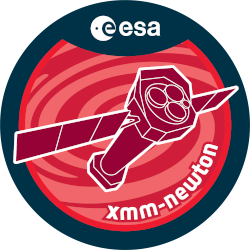

| Proposal ID | 069366 |
| Title | Unveiling the most massive clusters at z>0.5 with Planck and XMM-Newton. |
| Download Data Associated to the proposal | https://nxsa.esac.esa.int/nxsa-sl/servlet/data-action-aio?obsno=0693660101 |
| DOI | https://doi.org/10.5270/esa-ngf0ztw |
| Principal Investigator, PI | Dr monique arnaud |
| Abstract | We propose to gather spatially resolved spectroscopy of a sample of 33 massive(M_{500}>5e+14 solar masses) clusters detected blindly by Planck and confirmedto-day to be in the redshift range 0.5 |
| Publications |
|
| Instrument | RGS1, EPN, RGS2, EMOS1, OM, EMOS2 |
| Temporal Coverage | 2012-05-19T04:12:10Z/2013-01-13T18:44:14Z |
| Version | 17.56_20190403_1200 |
| Mission Description | The European Space Agencys (ESA) X-ray Multi-Mirror Mission (XMM-Newton) was launched by an Ariane 504 on December 10th 1999. XMM-Newton is ESAs second cornerstone of the Horizon 2000 Science Programme. It carries 3 high throughput X-ray telescopes with an unprecedented effective area, and an optical monitor, the first flown on a X-ray observatory. The large collecting area and ability to make long uninterrupted exposures provide highly sensitive observations. Since Earths atmosphere blocks out all X-rays, only a telescope in space can detect and study celestial X-ray sources. The XMM-Newton mission is helping scientists to solve a number of cosmic mysteries, ranging from the enigmatic black holes to the origins of the Universe itself. Observing time on XMM-Newton is being made available to the scientific community, applying for observational periods on a competitive basis. |
| Creator Contact | https://www.cosmos.esa.int/web/xmm-newton/xmm-newton-helpdesk |
| Date Published | 2014-02-05T00:00:00Z |
| Last Update | 2025-08-04 |
| Keywords | "XMM", "xmm newton ..", "XMM-Newton", "planck collaboration", "}> 5e", "fundamental scalings", "massive cluster", "resolved spectroscopy", "massive m_", "redshift regime", "redshift range", "complementary vlt", "entropy profiles", "solar masses cluster", "cosmological exploitation", "cluster gravitational collapse" |
| Publisher And Registrant | European Space Agency |
| Credit Guidelines | European Space Agency, Dr monique arnaud, 2014, 'Unveiling the most massive clusters at z>0.5 with Planck and XMM-Newton.', 17.56_20190403_1200, European Space Agency, https://doi.org/10.5270/esa-ngf0ztw |